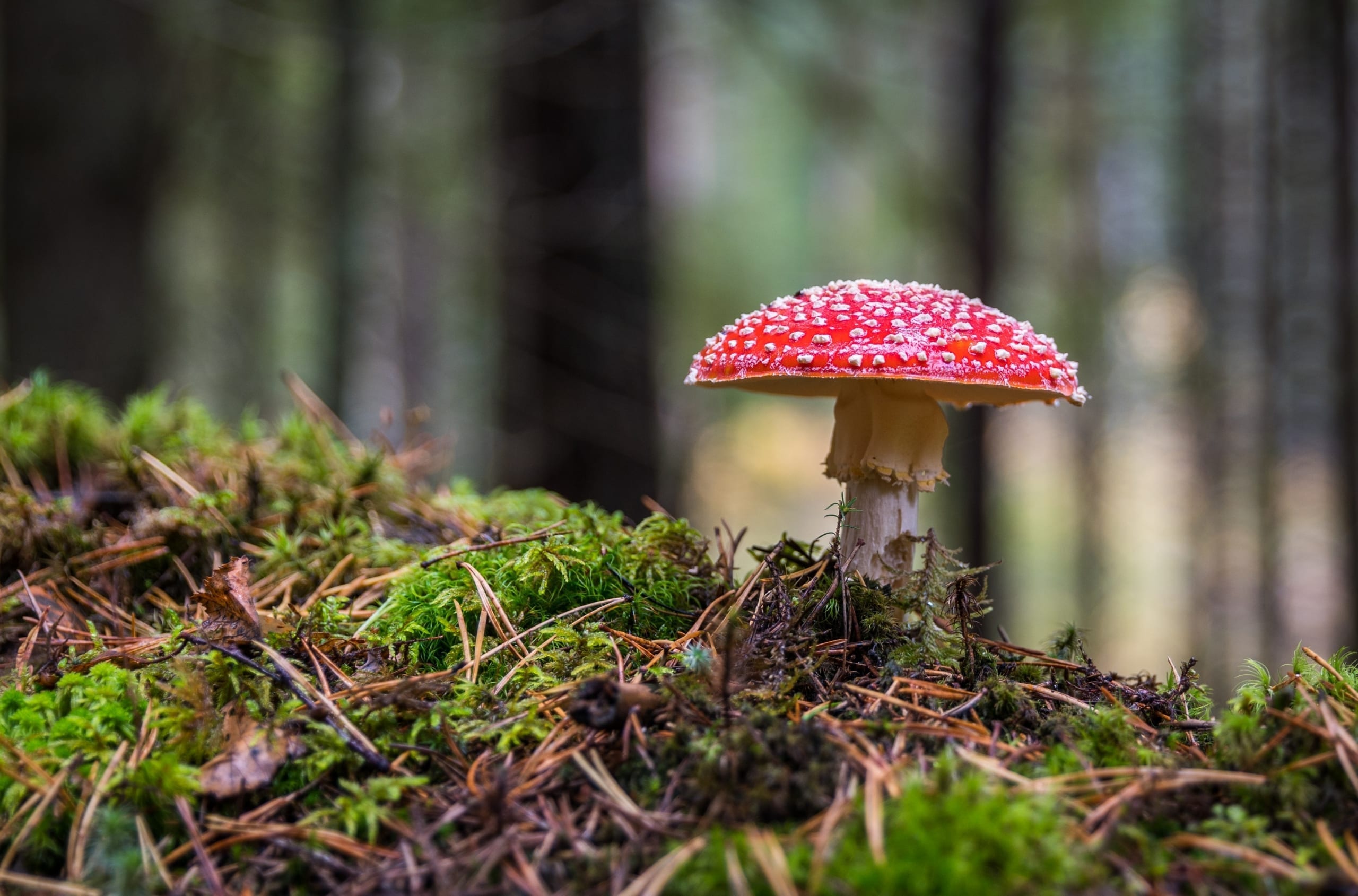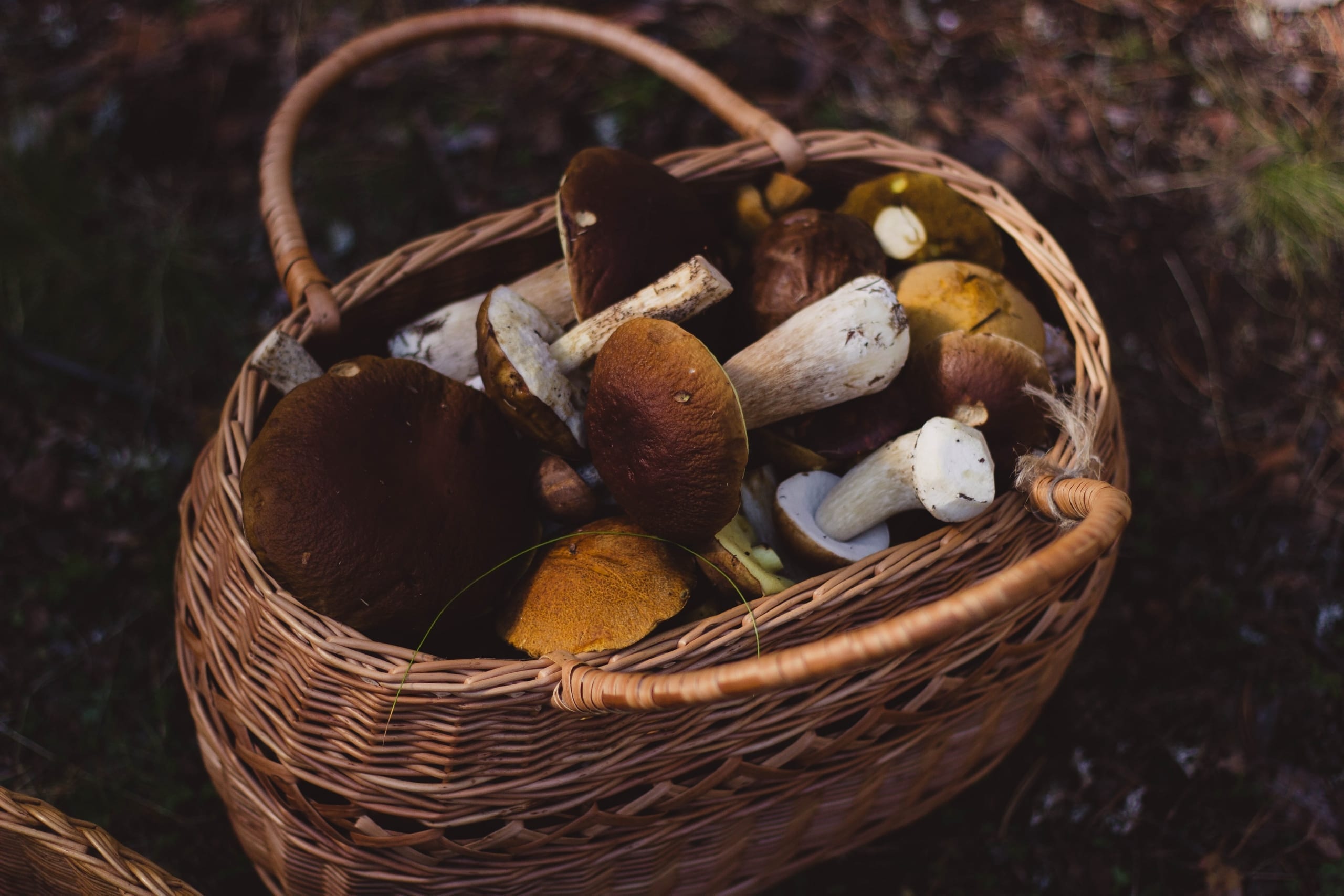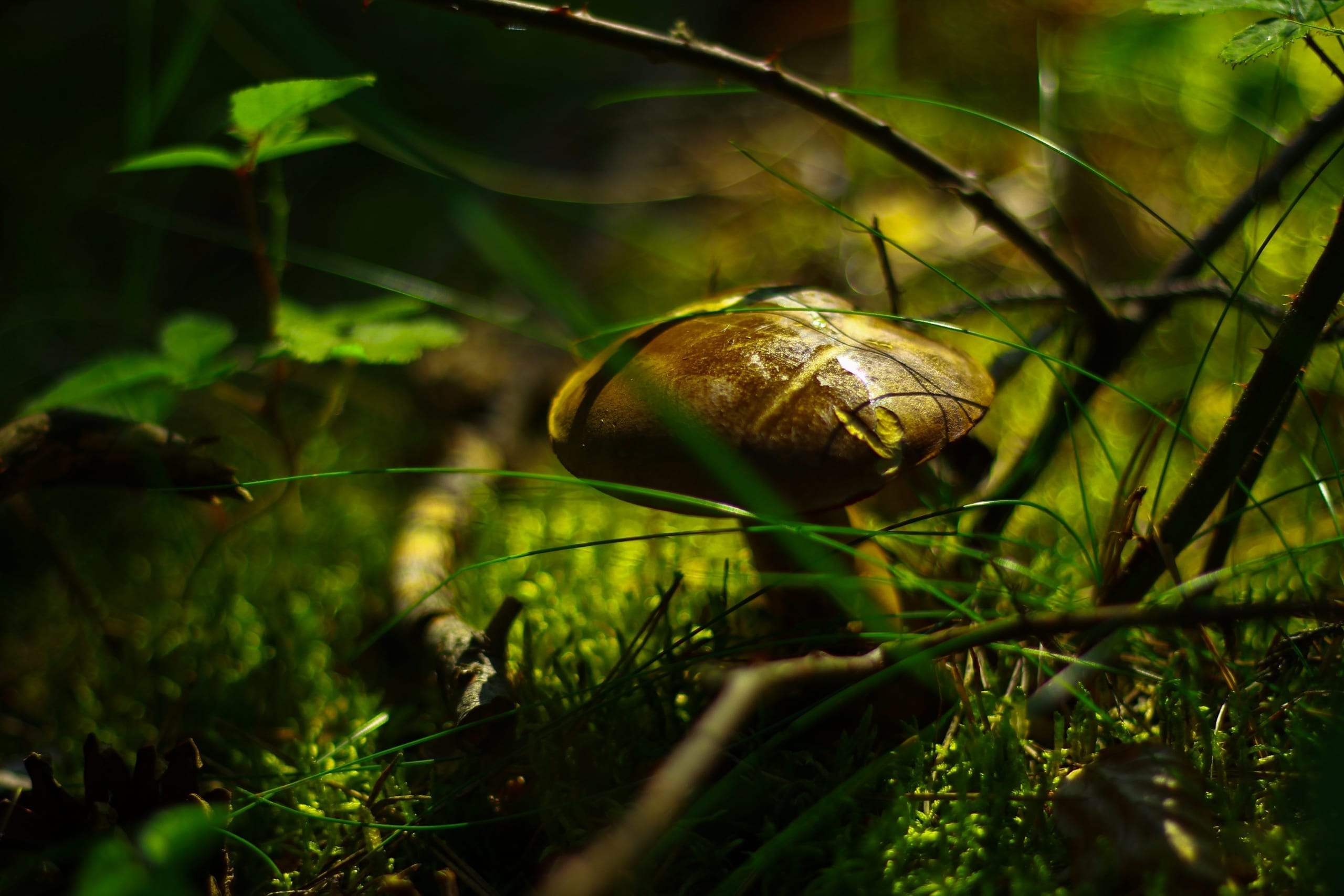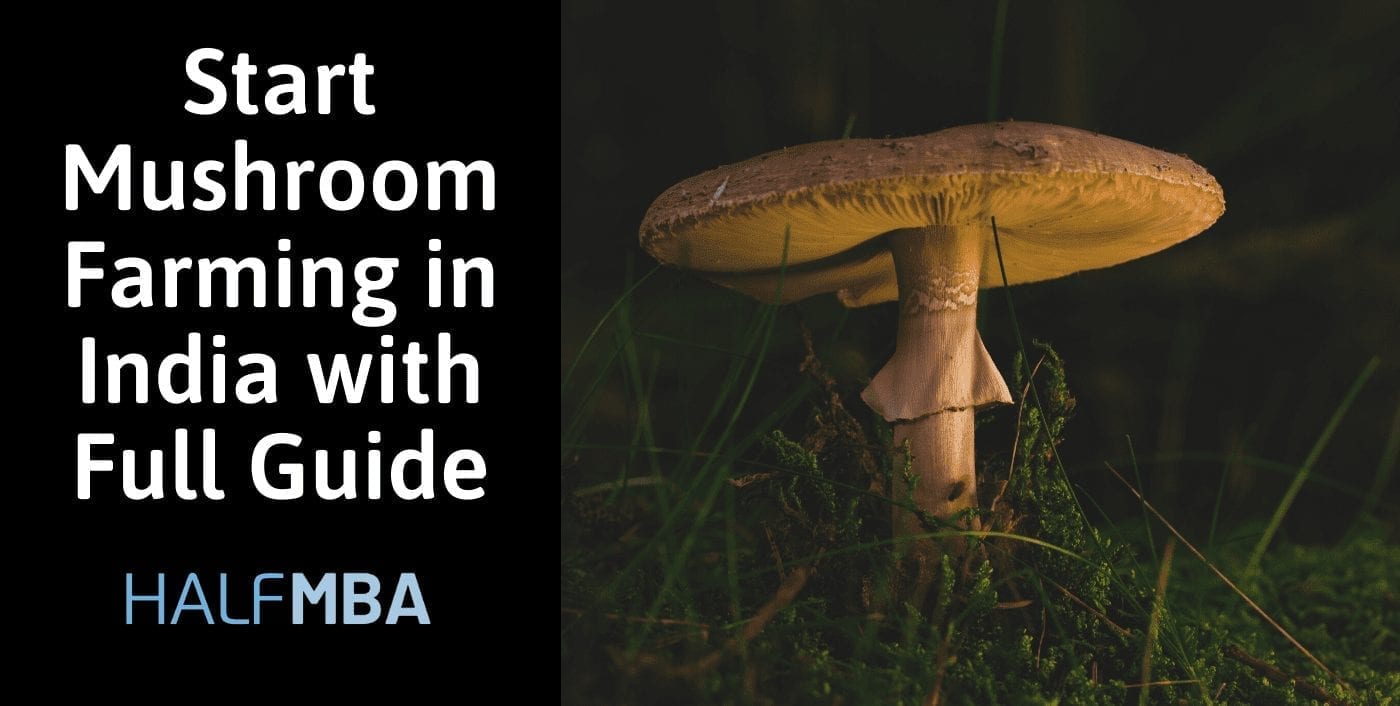When it comes to agriculture business mushroom farming is one of the profit counting businesses in India.
It has become an alternative source of income as the mushroom is a popular dish in restaurants and food court.
Types of mushroom farming
The trait of around 10,000 species of mushroom present on earth.
But in business then only 5 types of mushrooms are available. They are button mushroom (milky mushroom), paddy straw, especially mushroom, medicine mushroom, dhingari, and oyster mushroom.
Contents
Making Compost

- Composting is done in open to growing mushrooms.
- Prepare Compost yard on clean, raised platforms made of concrete button mushroom cultivation.
- Raise them in a proper format so that they do not face scarcity of water and accumulated at the heap.
- Although the composting is done in the open, they must be covered to protect from rain.
- Compost prepared is of two types, natural and synthetic compost. The compost is prepared in trays of dimensions 100 X 50 X 15 cm
Types of composting
Natural Compost
- Ingredients required are Horse dung, wheat straw, poultry manure, and gypsum. Finely chopped wheat straw is a must.
- Do not mix Horse dung with other animals. Collect fresh horse dung and do not expose in rain
- Mix the ingredients uniformly and spread on the composting yard.
- Sprinkle the water on the spread surface to wet the straws sufficiently. It is heaped and turned like that for synthetic manure.
- Owing to fermentation, the temperature of the heap increases and it gives an odor due to ammonia escaping.
- This clarifies that the compost has opened. The heap is turned every 3 days and sprinkled with water. During the 3rd and 4th turning, 25 Kg gypsum to per ton of compost is added. 10mL malathion to 5L water is sprayed into the heap during the final turning.
Synthetic Compost
- The ingredients for synthetic compost are wheat straw, bran (rice or wheat), urea, gypsum, calcium ammonium nitrate or ammonium sulfate.
- Chop the straw 8-20 cm. in length. It is spread uniformly to form a thin layer on the composting yard. Drench straw thoroughly by sprinkling water, mix all other ingredients like gypsum, urea, bran, calcium nitrate with the wet straw and heap them into a pile.
- The piling can be done by hand or with a stick. Keep in mind, not to compactly compress the straw although it should be compressed firmly.
Steps of mushroom farming
- Preparation of spawn
- Substrate preparation
- Spawning of substrate
- Crop management
Fill the Compost into Trays
- Dark brown and has no odor means the compost is ready.
- It smells like fresh hay with a nearly neutral or neutral pH. While filling the compost into trays, it must be neither too wet nor too dry. In case the compost is dry then sprinkle a few drops of water.
- If too wet, then allow some water to evaporate. When the compost has the right amount of water, a few drops of water would ooze out when a small amount of the compost is pressed between the palms.
- The size of the trays for spreading the compost can be as per convenience. However, it must be 15-18 cm deep.
- Make a softwood tray. They are provided with pegs so that when the trays are stacked one above the other, there is sufficient air gap.
- Fill the trays with compost to the brim and leveled them on the surface.
1. Get your spawn and substrate

- You’ll need a spawn to start the culture. You can produce your spawn using a sterile culture, or you can buy ready-to-inoculate spawn, which you can get from suppliers.
- Producing your own can be cheaper in the long run, but the start-up costs can be high, so chances are buying the ready-to-inoculate spawn is the way to go for you.
- You’ll also need to buy the substrate. Most of them use straw or wood chips. Straw is generally the preferred method. You want straw that can be chopped up into little pieces.
Spawning
- The process of sowing the mushroom mycelium into the beds is called spawning.
- Spawning can be done in two ways- either scattering the compost on the bed surface in the tray or mix the grain spawn with compost before filling the trays.
- After spawning the trays are covered with old newspaper sheets. The sheet surface is then sprinkled with water to maintain moisture and humidity. The trays may be stacked one above the other with the spacing of 15-20 cm between 2 trays. There should be a headspace of at least one meter between the topmost tray and the ceiling.
Temperature and Other Conditions

- During the period of spawn run, there should be no fresh air entering the room. Hence, it must be kept closed.
- The room temperature must be maintained at 25⁰C. Humidity and moisture level must be maintained by sprinkling water on the walls and the floor of the room.
- The spawn run lasts for 12-15 days although it may take longer if the temperature is lower.
Pack the Plastic Bags:
- Pack two or three inches of straw into the plastic bag and then lightly sprinkle the spawn on top. Repeat this until you’ve almost filled the bag, close the top and poke holes in the bag.
- Sterilization: For sterilization of one cubic meter casing soil using formalin, half a liter of formalin in 10-litre water is sufficient.
- The soil is spread over a plastic sheet and sprinkled with formalin. It is then heaped, covered with another plastic sheet and left to stand for 2 days. After 2 days, it is turned frequently for a week.
- The idea behind turning is to remove the traces of formalin. Once the casing soil is free of all traces, there would be no smell of formalin left behind.
Casing
- The spawn run is complete when there is white cottony growth. The surface of the compost is then covered with casing soil up to 3cm thickness.
- Casing soil is prepared by mixing finely crushed and sieved, rotten cow dung with the garden soil.
- The pH must be on the alkaline side (at least 7.4). Once prepared, the casing soil must be sterilized to kill the pests, nematodes, insects and other molds.
- Sterilization is done by treating it with formalin solution or by steaming. Once the casing soil is spread on the compost the temperature is maintained at 25⁰C for 72 hours and then lowered to 18⁰C.
- The room must have adequate ventilation facilities during the casing stage. Casing requires a lot of fresh air.
Cropping
- After 15 to 20 days of the casing, pinheads start becoming visible. White-colored, small-sized buttons develop within 5-6 days of this stage. Opened button mushrooms are considered to be inferior in quality.
- Mushrooms are ready for harvest when the caps are sitting tight on the short stem. If they are allowed to stay longer on the stem then the cap may open like an umbrella.
Incubation
- Now it’s time for incubation. Keep the growing area at around 78 degrees F.
- Places the bags on a shelving unit. Remember to stop any threats of natural light getting into the room.
- Cover windows and cracks. Use a red “darkroom” light when you need to check on your bags. When you figure out tiny pinhead mushrooms near the air holes in your bag, then you’re ready to move on to the next step.
Fruiting
- For your fruiting room, you need a high level of humidity. The temperature will need to be 65 to 70 degrees F. Unlike the incubation room, you’ll need a lot of natural light—at least 12 hours a day.
- To shock your mycelium, which will force it into fruiting, move the bags to a cool place for a day, such as a basement or other cool place, and then move them back to the fruiting room.
- Next, cut away the bag, which allows mushroom growth to take place.
Harvest
Twist the cap off gently while harvesting. For this, it is held gently with the forefingers, pressed against the soil and then twisted off.
The base of the stalk wherein mycelial threads and soil particles cling must be chopped off. Some farmers harvest button mushrooms by chopping them at the soil level.
Average Yield
The average production of button mushroom is 3-4 Kg per tray. In favorable conditions, the yield can go up to 6 Kgs as well.
Storage
Once harvested, the mushrooms must be consumed fresh. However, it can stay fresh if stored in the refrigerator for up to a maximum of one week. While storing in the fridge wrap them in a moist paper towel.
Marketing in India
- Mushrooms are demanded at various places. Various hotels and medicine manufacturing companies are also after it.
- It is also exported and imported to various countries. So there are many places available to sell it.
- Because of its other uses and features, it is also used in the field of medical science.
Investment and its ways:
- Like any other business investment level varies with your budget and level of business.
- Investment is required to spend on the land and caretaking of the mushrooms. You need for pesticides.
- If you start the business on a small scale then you have to spend Rs 10000 to Rs 50000, whereas for large scale Rs 1, 00,000 TO Rs 10, 00,000 can be your investment.
Register your Cultivation
The government has also started a loan facility for growing mushrooms. You can get the information regarding this on the website https://www.nabard.org.
You need to make a business proposal and present it to a government office.
You have to present your PAN card, Aadhar card and residence proof and bank account details over there.
You need to be eligible for subsidy by the government. If you are a small farmer then you will get a subsidy of 40% per bag of mushroom and 20% for a normal farmer.
Mushroom Farming Profit Margin:
If you start growing it in 100 square feet area then you can earn a profit of Rs 1,00,000 to Rs 5,00,000 per year. It all depends on the technology used.
Being one of the growing business in India. It can make you successful in the farming business. In the world of pollution and this can be a profitable and socially beneficial business for you. Comment and let us know how will you start your mushroom cultivation.

